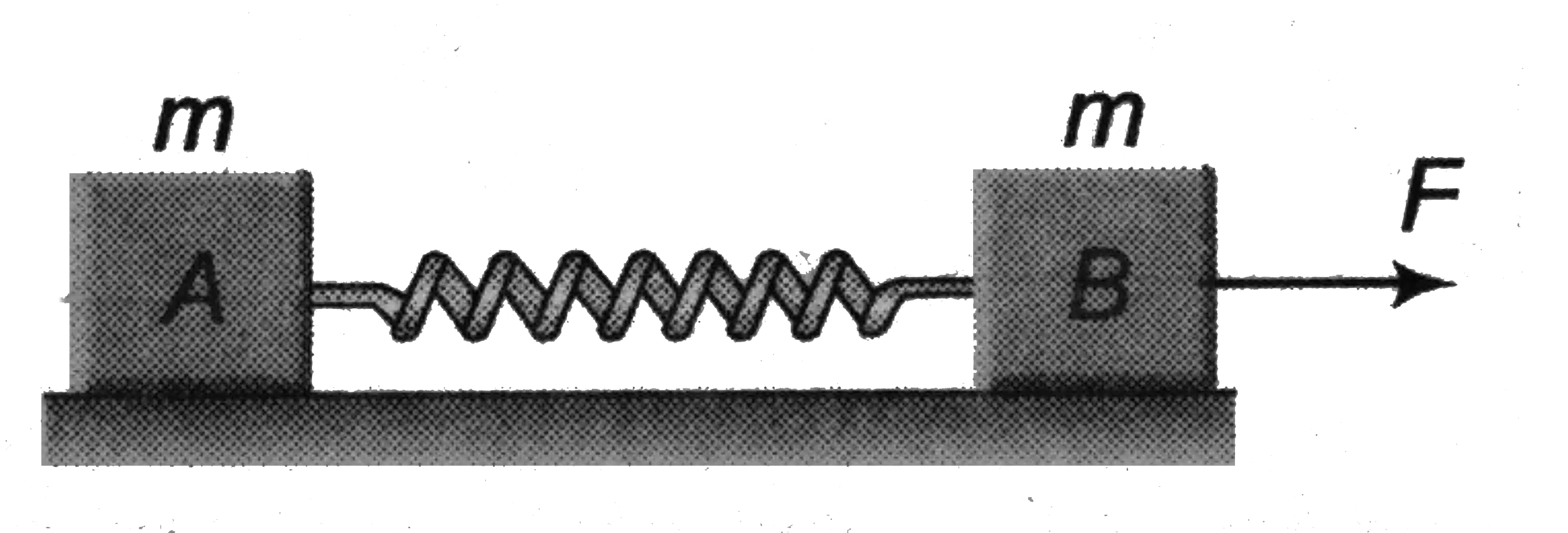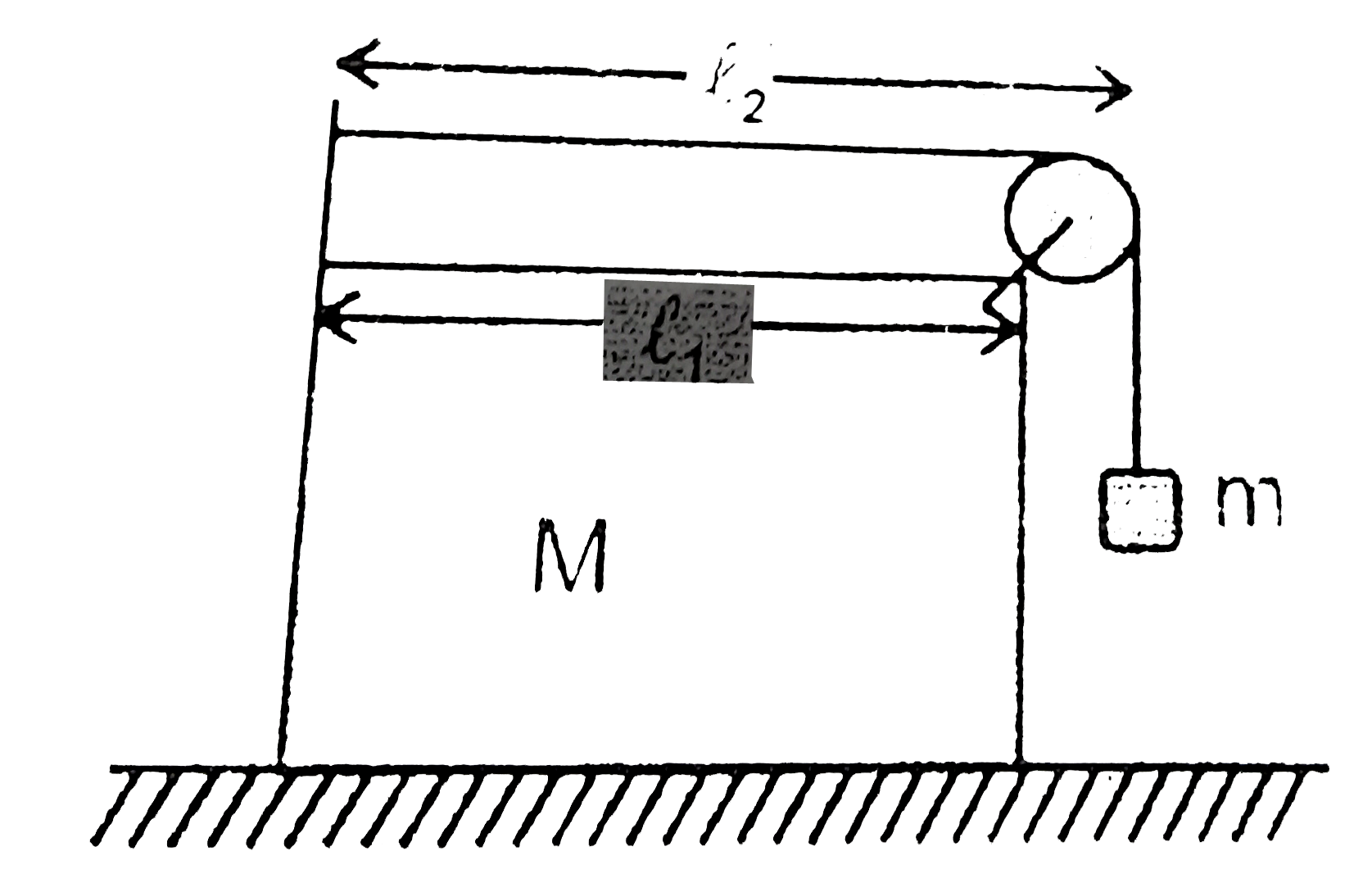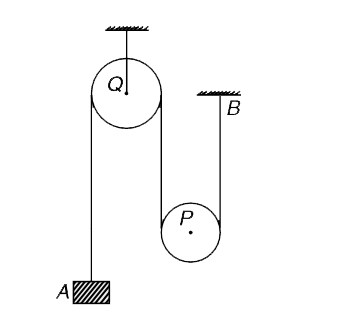Two identical blocks eac of mass M are linked by a thread wrapped around a pulley block with a fixed axis. A small mass 'm' is placed on the block B. What is the acceleration with which the two blocks move?

mgM+2m
mg2M+m
MgM+2m
Mg2M+m
The correct Answer is:D

Initially, the two masses are equal. Hence they will not move. But when a small mass is kept on B, then B will move down and A will move up with the same acceleration (a).
For the block B,(M+m)g−T=(M+m)a....(1) and for the block A,T−mg=Ma.......(2)
Adding (1) and (2) we get
(M+m)g−mg=(M+m+M)a
Mg+mg−mg=(2M+m)a
∴a=Mg(2M+m)
Topper's Solved these Questions
Similar Questions
Two blocks of masses M1andM2 are placed in contact with each other on a frictionless horizontal surface. If a force F is applied on the block of mass M1, what is the contact force between the two blocks?
View SolutionTwo identical blocks A and B of mass m joined together with a massless spring as shown in figure are placed on a smooth surface. If the block A moves with an acceleration a0, then the acceleration of the block B is

View Solution
Knowledge Check
Two identical weights of mass M are linked by a thread wrapped around a frictionless pulley with a fixed axis. A small weight of mass 'm' is placed on one of the weights. What is reaction force between m and M?
 A2Mmg2M+mBMg(M+m)2M+mCmg(M+m)2M+mD2Mg(M+m)2M+m
A2Mmg2M+mBMg(M+m)2M+mCmg(M+m)2M+mD2Mg(M+m)2M+mFour identical blocks each of mass m are linked by threads as shown. If the system moves with constant acceleration under the influence of force F, the tension T2 is
 AFBF/2C2FDF/4
AFBF/2C2FDF/4Two identical blocks each of mass ''M'' are tied to the ends of a string and the string is laid over a smooth fixed pulley. Initially the masses are held at rest at the same level. What fraction of mass must be removed from one block and added to the other, so that it has an acceleration of 1/5th of the acceleration due to gravity
A1/10B2.15C3.25D4.120
A uniform cubical block of mass M is attached to a pulley. One end of a string, passing over the pulley is fixed to a light pole while is fixed on the bigger block and its another end is attached to a block of mass m as shown in figure. The maximum value of the mass m so that the block does not topple is : (string and pulley are ideal)

View Solution
A light thread is wrapped tightly a few turns around a disc P of mass M. One end of the thread is fixed to the ceiling at B. The other end of the thread is passed over a mass less pulley (Q) and carries a block of mass M. All segment of the thread (apart from that on the pulley and disc) are vertical when the system is released. Find the acceleration of block A. On which object – the block A or the ceiling at B – does the thread exert more force ?
View SolutionTwo identical blocks each of mass ''M'' are tied to the ends of a string and the string is laid over a smooth fixed pulley. Initially the masses are held at rest at the same level. What fraction of mass must be removed from one block and added to the other, so that is has an acceleration of 1/5th of the acceleration due to gravity ? .
View SolutionTwo identical blocks A and B of mass m joined together with a massless spring as shown in figure are placed on a smooth surface. If the block A moves with an acceleration a0, then the acceleration of the block B is

View SolutionA uniform cubical block of mass M is attached to a pulley. One end of a string, passing over the pulley is fixed to a light pole while is fixed on the bigger block and its another end is attached to a block of mass m as shown in figure. The maximum value of the mass m so that the block does not topple is : (string and pulley are ideal)

View Solution
